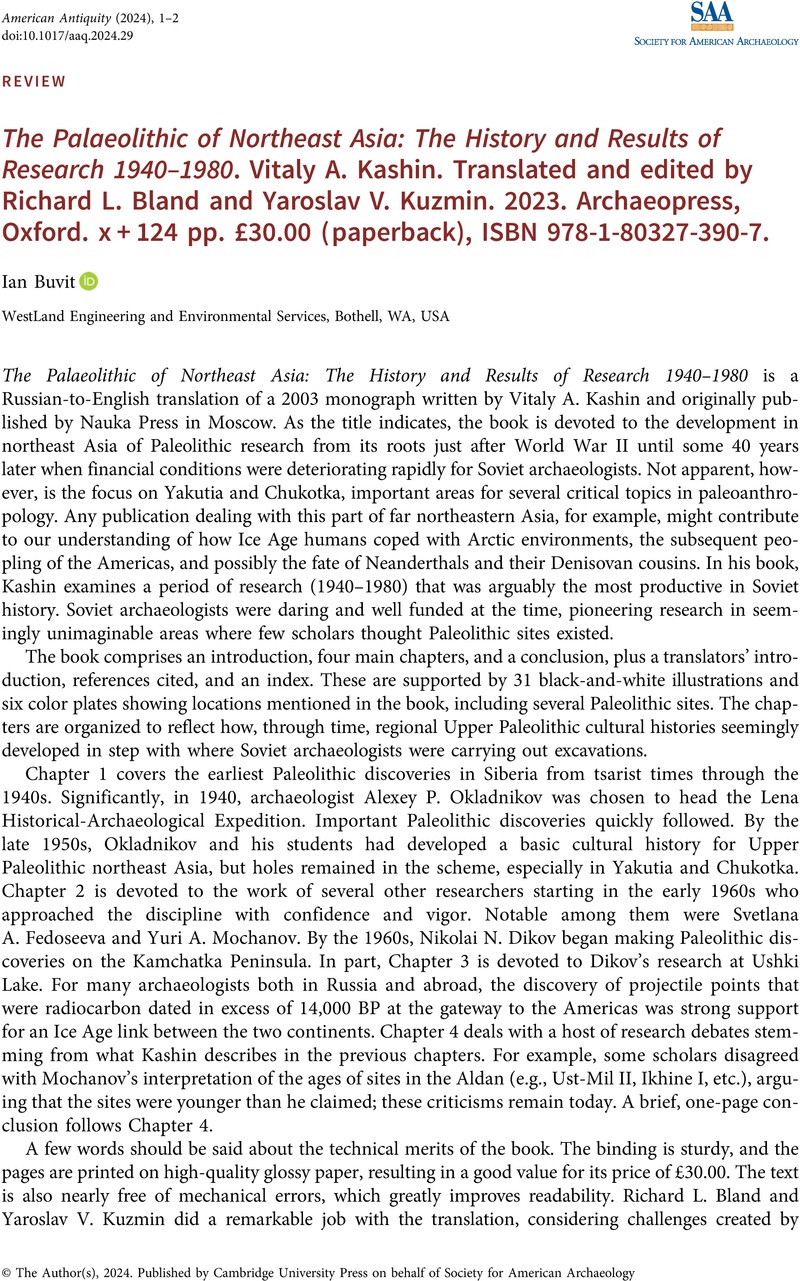No CrossRef data available.
Article contents
The Palaeolithic of Northeast Asia: The History and Results of Research 1940–1980. Vitaly A. Kashin. Translated and edited by Richard L. Bland and Yaroslav V. Kuzmin. 2023. Archaeopress, Oxford. x + 124 pp. £30.00 (paperback), ISBN 978-1-80327-390-7.
Review products
The Palaeolithic of Northeast Asia: The History and Results of Research 1940–1980. Vitaly A. Kashin. Translated and edited by Richard L. Bland and Yaroslav V. Kuzmin. 2023. Archaeopress, Oxford. x + 124 pp. £30.00 (paperback), ISBN 978-1-80327-390-7.
Published online by Cambridge University Press: 02 May 2024
Abstract
An abstract is not available for this content so a preview has been provided. Please use the Get access link above for information on how to access this content.

- Type
- Review
- Information
- Copyright
- Copyright © The Author(s), 2024. Published by Cambridge University Press on behalf of Society for American Archaeology


